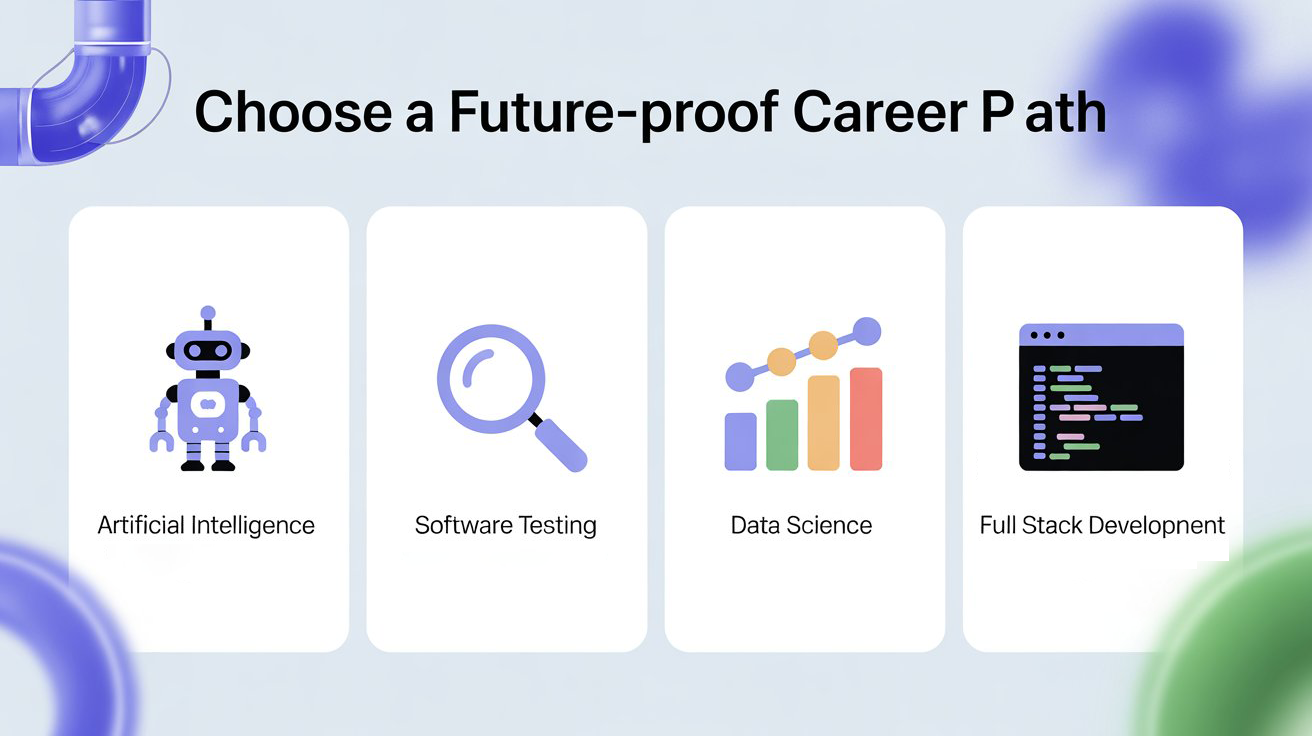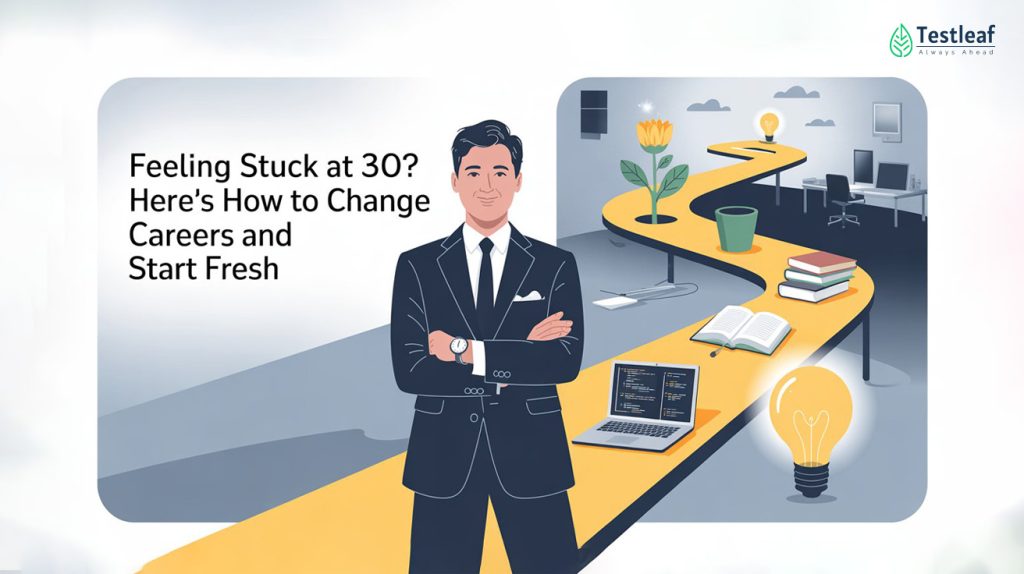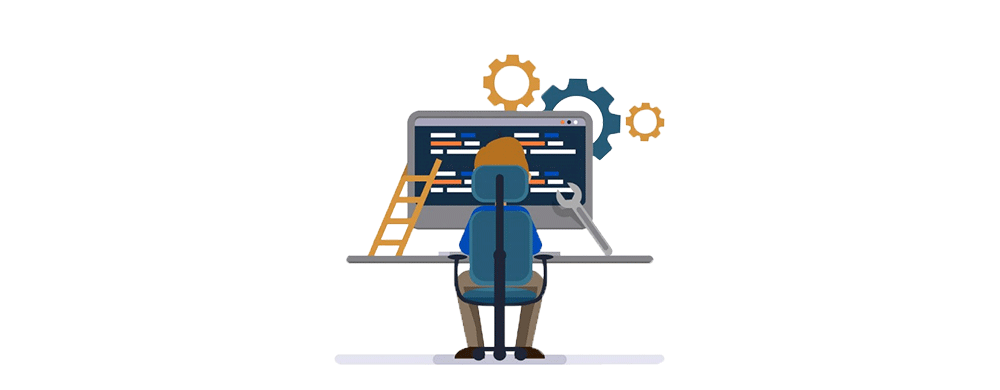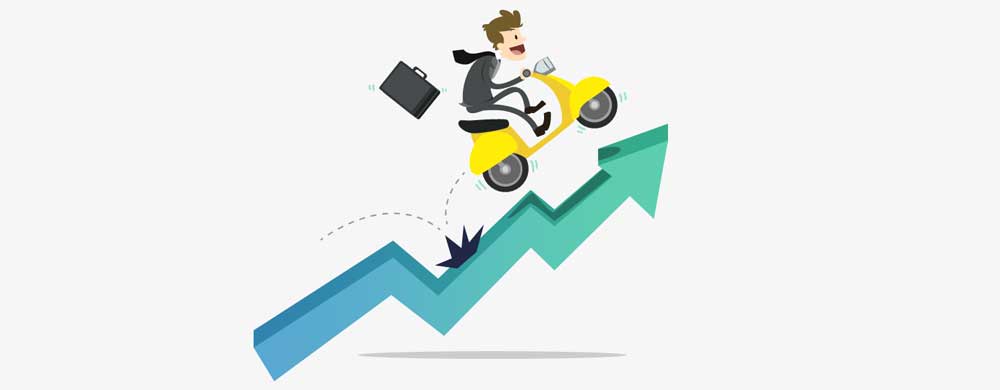Turning 30 often brings a mix of emotions — confidence from experience, yet anxiety about the future. For many professionals in BPOs, KPOs, or support-based jobs, it’s a moment of reflection. You’ve worked hard for years, developed strong communication and problem-solving skills, but somewhere deep down, a voice whispers — “Is this what I really want to do for the rest of my life?”
If you’ve ever felt stuck in your current job, wondering if it’s too late to start fresh — the truth is, it’s never too late. In fact, your 30s can be the best decade to pivot your career towards something more rewarding, future-proof, and fulfilling.
Let’s explore how you can successfully transition from a non-IT background to a thriving career in the tech industry — even if you’re starting from scratch.
1. Understand Why You Feel Stuck
The first step is awareness. Many professionals in BPOs or support roles often face burnout due to repetitive work, night shifts, and limited growth opportunities. Over time, the lack of skill progression or innovation makes you feel stagnant.
But here’s the good news: your existing skills — like communication, adaptability, and customer understanding — are transferable and highly valuable in the tech world. The problem isn’t your capability, it’s simply that your current job doesn’t challenge or excite you anymore. Recognizing this is the first sign that you’re ready for a change.
Continue Reading: selenium interview questions
2. Choose a Future-Proof Career Path
If you’re planning a shift, it’s important to choose a career that aligns with your interests and has long-term demand. Here are four of the most promising career paths for non-IT professionals entering tech:
Artificial Intelligence (AI)
AI is transforming every industry — from healthcare and finance to marketing and education. With the rise of automation, professionals who understand how AI models and tools work are in high demand.
Even if you’re not from a programming background, you can begin with AI fundamentals, learning the logic behind machine learning, natural language processing, and data analytics. Over time, you can specialize in areas like AI for business automation or AI-powered customer service, leveraging your past experience from BPO or KPO sectors.
Software Testing
If you’re detail-oriented, love problem-solving, and have strong analytical thinking — software testing could be your perfect entry point. Testers ensure that every application works seamlessly before it reaches customers.
The beauty of software testing is that it doesn’t require deep coding expertise to start. You can begin with manual testing, then gradually move into automation testing using tools like Selenium or Playwright. This role is both intellectually engaging and highly in demand across industries.

Data Science
Data is called the “new oil” for a reason. Every company wants to make better decisions — and data scientists help them do just that.
If you’ve worked with large sets of customer data or reports in your current job, you already have an advantage. Learning Python, statistics, and visualization tools like Power BI or Tableau can open doors to data-driven roles. With the right Data Science course, you can transition from handling support tickets to driving strategic insights for companies.
Full Stack Development
If you’re more creative and enjoy building things from scratch, full stack development might be your calling. It involves designing, coding, and deploying complete web applications — both the front-end (what users see) and the back-end (how the app works).
Full stack developers are problem solvers. You can start with the basics of HTML, CSS, and JavaScript, then move into frameworks like React.js and Node.js. Within a few months of structured learning and practice, you’ll have the ability to build real-world projects that showcase your new technical skills.
3. Learn the Smart Way — Not the Hard Way
You don’t need a four-year degree or a fancy college name to make it in tech today. The world of online learning has made it possible for anyone, at any age, to upskill while working full-time.
Start small. Dedicate 1-2 hours a day to learning. Platforms offering structured online courses with mentors can guide you step-by-step, helping you build real projects, gain certifications, and even prepare for interviews.
The key is consistency — learning a little every day is better than binge-learning once a week.
4. Build a Portfolio and Start Networking
Once you gain the skills, the next step is to showcase your work. Create a GitHub profile, build small projects, or share your learning journey on LinkedIn.
Also, connect with professionals who’ve made similar transitions. Join communities, attend webinars, or participate in hackathons. Networking often opens doors faster than applications.
Remember, tech recruiters value skill + passion more than your past job title.
You Might Also Like: automation testing interview questions
5. Be Patient, Persistent, and Positive
Career change is not a one-day event; it’s a journey. You might face moments of self-doubt, comparison, or even rejection — but each step brings you closer to a better version of yourself.
In your 30s, you bring maturity, discipline, and experience — qualities that younger candidates often lack. Combine that with new-age tech skills, and you’ll stand out effortlessly.
Conclusion: Your New Beginning Starts Now
If you’re reading this and wondering whether it’s possible to start a tech career at 30 — the answer is a big yes. Thousands of professionals from non-IT backgrounds have successfully transitioned into tech, and you can too.
Start by exploring what excites you — whether it’s AI, Data Science, Full Stack Development, or Software Testing. Each of these paths offers flexibility, growth, and stability.
And if you’re ready to take your first step, begin with a software testing course online. It’s one of the easiest and most rewarding ways to enter the IT world, build confidence, and open doors to a career filled with possibilities.
Your 30s aren’t the end — they’re your fresh start.
FAQs
1. Is 30 too late to change careers?
Not at all. Many professionals successfully switch careers at 30 by aligning their interests, gaining new skills, and leveraging transferable experience.
2. What are the best career options for someone switching at 30?
Popular options include software testing, data analytics, digital marketing, full-stack development, and project management — all fields with high growth potential.
3. How do I start a career change at 30?
Start by identifying your interests, researching job roles, enrolling in a relevant training program, and networking with professionals in your target field.
4. How long does it take to switch careers at 30?
Typically 6–12 months, depending on your learning pace and the industry you choose. Upskilling and hands-on projects accelerate the transition.
5. Can I get a tech job at 30 without a computer science degree?
Yes! Many people build successful tech careers through practical, project-based courses like software testing or full-stack development, even without formal degrees.
We Also Provide Training In:
- Advanced Selenium Training
- Playwright Training
- Gen AI Training
- AWS Training
- REST API Training
- Full Stack Training
- Appium Training
- DevOps Training
- JMeter Performance Training
Author’s Bio:

Content Writer at Testleaf, specializing in SEO-driven content for test automation, software development, and cybersecurity. I turn complex technical topics into clear, engaging stories that educate, inspire, and drive digital transformation.
Ezhirkadhir Raja
Content Writer – Testleaf








